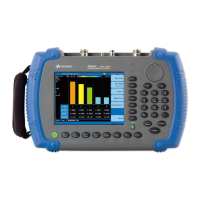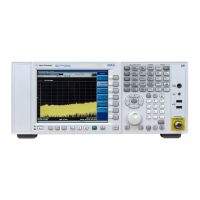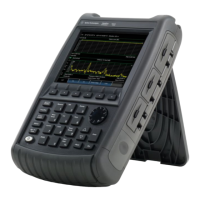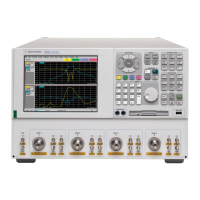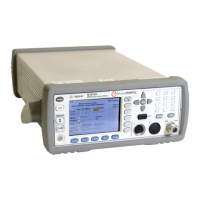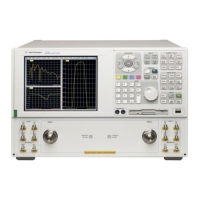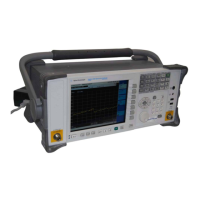Functions and Measurements 3
N9342C/43C/44C User’s Guide 51
Measuring Stop Band Attenuation of a
Low-pass Filter
When measuring filter characteristics, it is useful
to look at the stimulus response over a wide
frequency range. Setting the analyzer x- axis
(frequency) to display logarithmically provides this
function. The following example uses the tracking
generator to measure the stop band attenuation of
a 370 MHz low pass filter.
1 Connect the DUT as shown in Figure 3- 17 on
page 49. This example uses a 370 MHz low pass
filter.
2 Press [Preset] to perform a factory preset.
3 Set the start and stop frequencies:
• Press [FREQ] > {Start Freq} > 100 > {MHz}
• Press [FREQ] > {Stop Freq} > 1 > {GHz}
• Press [AMPTD] > {Scale Type} > {Log}
4 Press [BW] > 10 > {kHz} to set the resolution
bandwidth to 10 kHz.
5 Turn on the tracking generator and if necessary,
set the output power to - 10 dBm:
Press [MODE] > {Track Generator} > {Amplitude (On)} >
–10 > {dBm}.
6 Press [Sweep] > {Sweep Time (Auto)} to put the
sweep time into stimulus response auto coupled
mode. Adjust the reference level if necessary to
place the signal on screen.
7 Connect the cable (but not the DUT) from the
tracking generator output to the analyzer input.
Store the frequency response into trace 4 and
normalize:
Press [MEAS] > {Normalize} > {Store Ref} (1 → 4) >
{Normalize (On)}
CAU-CAUTION
Excessive signal input may damage the DUT. Do not exceed
the maximum power that the device under test can
tolerate.

